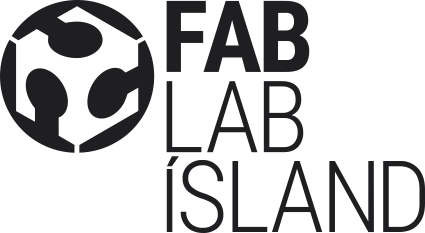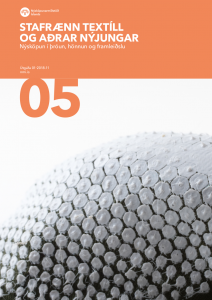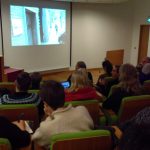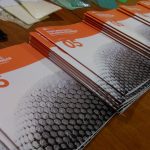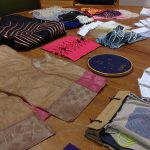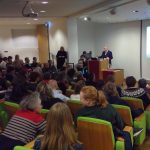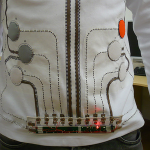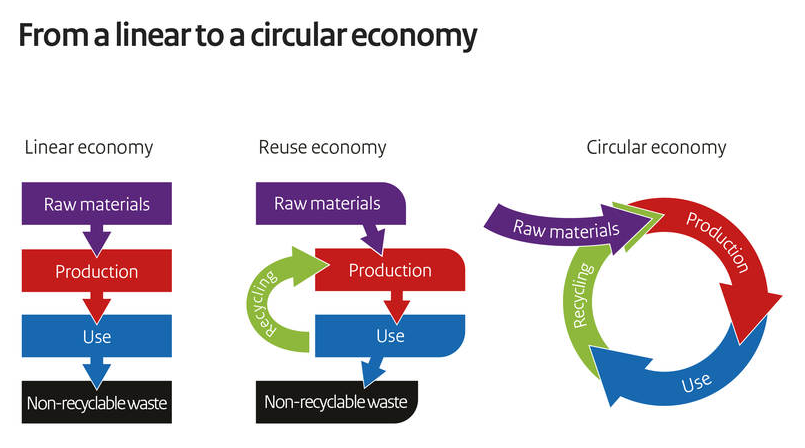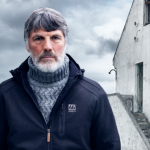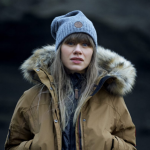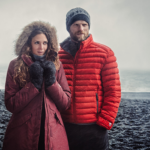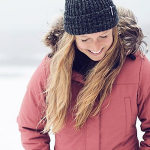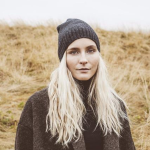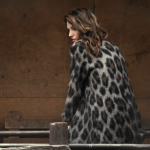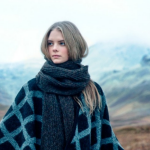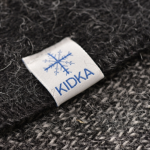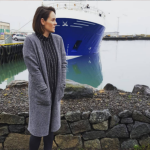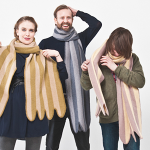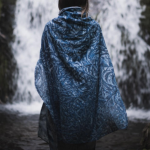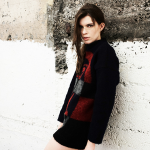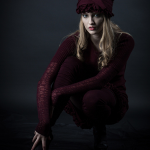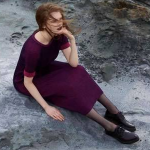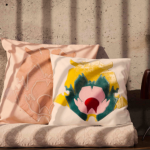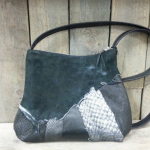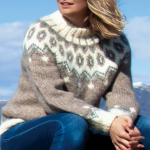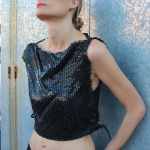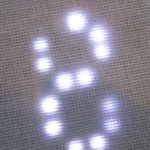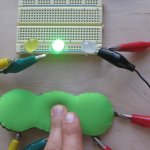Stafrænn textíll og hringrásarhagkerfið Nýsköpun
Breytingar eru hraðar á öllum sviðum samfélagsins og þá ekki síst þegar kemur að nýjungum við að hanna og þróa vörur. Viðhorf gagnvart því hvað sé framleitt, hvernig, og meðhöndlun vara á meðan á notkun stendur, og eftir að henni lýkur, eru stöðugt að breytast. Þetta á ekki síst við textíliðnaðinn. Textíliðnaðurinn hefur undanfarin ár orðið fyrir verulegri gagnrýni. Annars vegar tengist sú gagnrýni samfélaglegum málum, svo sem á sviði umhverfismála, sjálfbærni, þátttöku barna og minnihlutahópa við framleiðslu og verslun á vefnaði og svo hins vegar skorti á nýrri hugsun til að leysa framangreind viðfangsefni og jafnframt að tileinka sér nýjungar, svo sem stafrænar lausnir.
Nýsköpunarmiðpstöð Íslands vonar að málþingið og ritið verði til að innleiða enn frekari umræðu um tækifæri sem felast í stafrænum textíl, með áherslu á íslenska hönnun, sem byggir á eldri arfleið og hönnun, þróun og framleiðslu með nýjungum í meðferð efna, framleiðslu, notkun mynstra, og nýjum tæknimöguleikum
- Ávarp. Þórdís Kolbrún R. Gylfadóttir, ferðamála-, iðnaðar og nýsköpunarráðherra.
- Fab textiles. Towards a new discipline of Textiles, digital fabrication and biology. Anastasia Pistofidou, stofnandi Textile-Academy og Fab Textiles research lab.
- Kynning á skýrslu Nýsköpunarmiðstöðvar Íslands, Stafrænn textíll og aðrar nýjungar, nýsköpun í hönnun, þróun og framleiðslu. Frosti Gíslason, verkefnastjóri á Nýsköpunarmiðstöð Íslands.
- Opnun vefsíðu um stafrænan textíl. Linda Wanders, verkefnastjóri á Nýsköpunarmiðstöð Íslands.
- Vefnaður/stafrænn vefnaður. Ragnheiður Björk Þórsdóttir, textíllistamaður og framhaldsskólakennari.
- Örerindi um endurnýtingu textíls. Katrín Káradóttir, fagstjóri í fatahönnun við Listaháskóla Íslands.
- Silkiormar á Íslandi - möguleikar og tækifæri. Signý Gunnarsdóttir, silkiormabóndi og fatahönnuður.
- Lokaorð. Elsa Arnardóttir, forstöðumaður Þekkingarseturins á Blönduósi.
29.nóvember 2018
kl. 09:00 - 11:00
Málstofa haldin í Þjóðminjasafni Íslands
Suðurgata 14, 101 Reykjavik
Facebook: https://www.facebook.com/events/2163729717178844/?active_tab=about
Sign up: https://nmi.createsend1.com/t/ViewEmail/t/C7950D2776D2DCDD2540EF23F30FEDED
Fundastjóri: Karl Friðriksson forstöðumaður á Nýsköpunarmiðstöð Íslands
Málstofan er samstarfsverkefni Textílsseturs Íslands á Blönduósi og Nýsköpunarmiðstöðvar Íslands.
Staffrænn textill og aðrar nýjungar
Nýsköpun í þróun, hönnun og framleiðslu
tímarit : 2018-11 Stafrænn textíll _WEB
- útgáfa: nóvember 2018
- Útgefið af: Nýsköpunarmiðstöð Íslands
- ISBN 978-9935-463-55-5
Anastasia Pistofidou
Presentation slides : FabTextiles in Iceland
FabTextiles.org & Textile-Academy.org


World of textiles
Fabrics in our daily lives
Textiles touches nearly every part of our life. It is often associated with fashion and for the use craft like sewing and knitting, but of course applied to so many objects then just that.
Just to point out the scale of how textiles are integrated in our society, think about; personal items, (wallet, phone case, umbrella, shoes´s and bags) decorative or functional pieces around the house (rug, curtains, towels, bed linen), furniture (at home or in the office), transport interiors (car, bus, plane), protective items (overall, lab coat, welders or bulletproof vests), industrial items (netting, tarp, rope), Large structures coverings (pavilions or space station modules), machine coverings (bicycle seats and handles), not to mention all the industrial applications; Agro-tex (crop protection), construction-tex (building reinforcement), geo-tex (civil engineering), industry-tex (filtration), packaging (containers, bags, straps, covers) etc.
A brief history of textiles
The use of a sewing needles is uniquely associated with the human species, dating back to prehistoric times. And the same goes for the use of dyes. From the stone age the use of the loom is invented, allowing us to make sheets of cloth more easily. Then fast forward to the industrial revolution where the loom get´s automated by connecting it to a watermill (later steam engines), starting modern times for the textile industry. The sewing machine emerges even later, in the 19th century, streamlining clothing production.
But since then the production chain of garments has not changed much. Starting with gathering material from cotton fields or wool harvesting from sheep. The material then gets cleaned, combed, dyed and spun to yarn. The yarn spools get woven to sheets. Then it's ready to be cut to pattern, sewed and finished into ready-to-wear clothing.
Since the 1930´s a new type of textile is introduced to the to market; synthetics. Nylon (made from plastics) was first used commercially in a toothbrush in 1938, but followed soon after with women's stockings. During World War II, almost all nylon production was diverted to the military for use in parachutes and parachute cord. Wartime uses of nylon and other plastics did greatly expand the market.
Another familiar material name is Gore-Tex—a polymer that is layered together with regular fabric to make a waterproof, breathable fabric membrane— invented in 1969. Gore-Tex is defined as a technical fabric. Another big innovative step was employing nanotechnology in textile production. For instance, fabrics embedded with silver nano particles have antibacterial properties. This is referred to as a smart fabric.
Since then, the use of ‘technical and smart fabrics’ finds rapid development, most commonly used today in all types of industry (protective clothing, filtering, covering or reinforcement building material etc.) and in fashion. We are all familiar now with materials, derived from plastic like lycra (sportswear, bra, swimsuit) and polyester (shirts). And also with waterproof, stain-repellent, odor-resistant, crease-resistant and antibacterial etc. types of fabrics.
The latest innovation on the market is E-textiles or electronic textiles. The development started in the late 1990s as a research effort to incorporate computing interactivity. Since the early 2000´s it has been adopted into the designer and maker community. And now that the computing techniques are becoming so much smaller and more sophisticated, functional prototypes are finding its way to commercial market.
Design, science and engineering are the foundation of new development. Bringing these together will catalyst and promote experimentation of new idea´s. We should not wait for changes to come, together we should take the opportunity to make changes a reality.
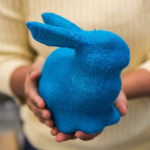
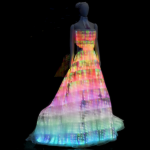
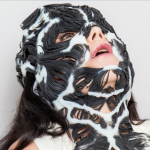
Smart clothing
Historically wearing ´computers´ has been perceived as too science fiction, but with the recent breakthrough in wearable tech, the concept has become mainstream, though most of today's wearables are yet limited to wrist displays. Yet the race is on to integrate technology with clothing.
In tech development, fashion and theater have a huge role to play. Starting with statement pieces that are worn by (performance) artists and celebrities, pushing the boundaries in a fun and playful way.
One of the current mainstream tech examples is a biometeric sensing wearable. The concept for this started in the medical world; a strap on heart rate measuring device. Which has developed into a simpler (more user friendly) tool with the interest from sports companies, willing to improve the performance of their athletes through more specified coaching.
And sport companies also have, since back in the 80's, been developing technical fabrics that help to regulate the body temperature, reduce wind resistance & control muscle vibration etc. But since electronic components are becoming so small, lightweight and flexible, finding non intrusive ways to turn a wearable into an incorporated sensor in clothes is now a possibility.
Essentially, the future of fashion in e-textiles is a lot like what we’re already wearing, but happens to have digital interactivity. For the consumers to have interest in these products, the items have to be technologically supplementing what is already available. But it needs to be comfortable and trendy or no one will be eager to wear it.
Product examples
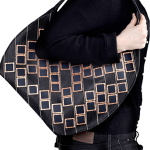
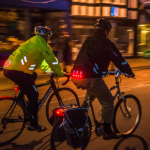
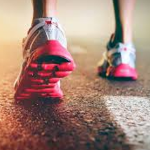
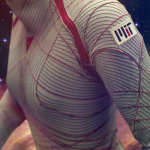
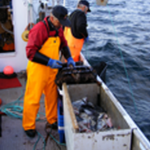
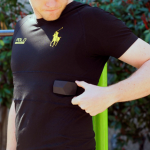
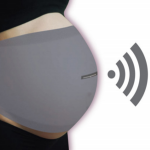
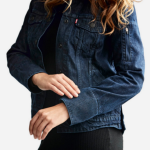
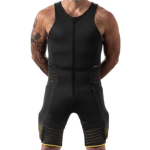
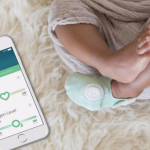
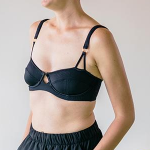
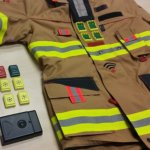
Research and development
Over the last 20 years the turnover in fashion showcases has become increasingly shorter and shorter. It has become such a change that this trend has been named ´fast fashion´. Within the industry between 2000 and 2010 there has been an estimated 47% global increase of textile consumption. Which in turn has a huge impact on our environment and the planet's resources.
Though friendlier way´s of producing like eco-grown cotton are at some places already put in practice. And there are more sustainable alternatives too, for example a popular cotton replacement is hemp or bamboo. But note that these materials need a bleaching process before going trough dyeing, because naturally these fibers are not white. And growing material plus the washing and dyeing process afterwards requires huge amounts of water.
Then looking closely at the end product, it can then still be that the threads, buttons and zippers etc. needed to complete the garment come from a different sources, resulting in a close but not 100% friendly product.
And include the knowledge that there is a growing global demand for clothing which will not be sustainable for generations to come, leads to the question on how to rethink the production chain of textiles.
Waterless dyeing research
One of the initiatives to change the clothing production is the waterless dyeing technology, in development sinds 2010. There is no water consumption, a reduction in energy use, no auxiliary chemicals required, no need for a drying process, and is twice as fast to produce colored textiles. If this technology is brought to scale it can greatly affect the clothing market.
Biomimicry research
Research on growing fabrics (kombucha) with bacteria or applying them instead of a chemical dyeing process (bio dye) might be plausible in a controlled experimental environment, but it also needs to be scalable to meet the large demands of industrial production.
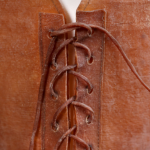
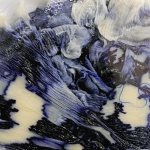
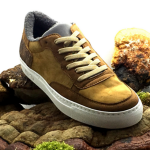

Innovation research
When thinking about smart clothing excluding fashion, examples can be imagined in the context of medical, industrial or military applications. Many research projects exist in relation to textiles.
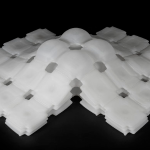
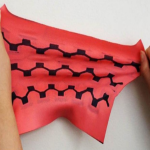
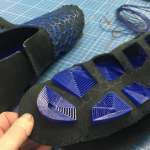
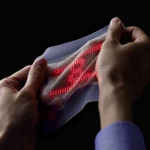
Tracking
Like in every industry sector, the more efficient operations are, the more money and time is saved – which is where technology comes in. RFID is an effective way for storing digital information; which is shared via electromagnetic fields and radio waves. The little chip can be added to a clothing label and is durable enough to survive the process of washing. Over the last 10 year fashion brands have started adopting the technology into their products for various retail reasons. Such as combating anti-theft and counterfeit products, improving tracking of in-store shopping and controlling inventory.
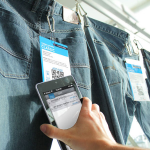

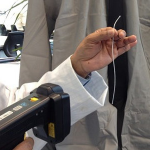
Circular economy
paper : A New Textiles Economy
Consumerism is what drives today's market. From a consumer perspective, we like to be eco friendly but it is hard to make the right choice. Finding a way through endless product offers with often an nontransparent globally spread out production process. And if we find the ´right´ products, they are often out marketed by cheaper ´unfriendly´ options. According to various studies, average clothing (for an occasion) get´s only worn 3 - 7 times before discarded. And 3 out of 5 of those items end up in a landfill or incineration within the same year. By now it is common knowledge that linear, make-take-dispose model is in need of a sustainable alternative. But the commercial side of business is never going to change the argument around selling volume. And fashion industry that employs hundreds of millions of people, generates significant revenues, and touches almost everyone, everywhere.
Approximately more than 80 billion garments are produced annually, worldwide. In 2010, about 5% of the U.S. municipal waste stream was textile scrap, totalling 13.1 million tons. The recovery rate for textiles is only 15%. From the recovered textiles, a large portion usually ends up as industrial rag. And textiles that actually are reused still need additional virgin fiber to get it up to quality standards again. Though the amount of waste vs. recycling varies per country, some recycling initiatives in itself are debatable too. For example, donating clothes to Africa has lead to impacting it´s local textile industry. And it is also said that donating clothes leads to the ´feel good´ paradox. Keeping up the habit of consuming. Where we want to end up is an industry based on circular economy principles. Using natural materials, giving garments a longer lifespan, innovating the recycling chain to create more revenue and making effective use of renewable resources.
Modular clothing
The modular concept actually began as an exercise in anti-high-fashion, and has been around since the 70's. It was adopted into a mass-market version of owning many multi-purpose items. In recent years more minimalist views on this are gathering momentum. Owning less, but as example single clothing items that is adjustable from day to evening look.
What if sustainability is the mainstream lifestyle and mindset. For a consumers perspective that could be changing the norm from owning clothing to renting clothing. So change to suit trends is easy. But clothes will get a longer lifespan via different owners and get regular mending. From a business perspective this could be through sharing data. For example, if designers fully understand the requirements of the recycling plant, by accessing to a database, they can make a more conscious design, resulting in more efficiency and more reusable textiles.
Icelandic Design
To capture what ´Icelandic design´ entails, it must be split up in different sections, defined by a point of view. Because within the commercial industry there is a distinct difference between ´designed´ and ´made´ in Iceland. Though examples below are all considered Icelandic products, the level of local involvement varies per brand. One of the hardships for Icelandic designers, is that Iceland has a relatively small population, resulting in a competitive market. Student designers have limited local choice if they want to join established design companies or getting an entrepreneurship off the ground. And the same applies to local production, competing with cheaper and quicker production abroad. The bright side is that it forces local companies to create high quality products and gives designers the need to have an innovative point of view, to stand out of the crowd.
Designed in Iceland
There are several examples of successful Icelandic outdoor brands that all started designing items for the local market and grew towards international sales over the last decade. Though the main office is Icelandic with some Icelandic designers, production is outsourced abroad and sales are international.
Made in Iceland
Covers Icelandic fashion that is mainly focused on knitwear wool (sustainable) products. Wool is sourced from local industry but mixed in with imported wool, depending on the desired softness of the product. Sales are local, but depending on the company some products are internationally available as well.
Icelandic Design
In recent years, this field has been expanding, which is also recognized abroad. Off course, Icelandic design covers more products than textiles. Folklore, heritage, history, national identity, nature and nostalgia influence many designers. Due to some limitations of accessibility to materials, wool is a often featured in design statements.
Textile innovation
Textile design has a history in Iceland, with tradition of knitting and weaving. However, since the last decade foreign import is dominating over local production. But the production shift does not stop design from reinventing itself. The design is often based on the nation's heritage, but also has innovation in the presentation and in use of materials.
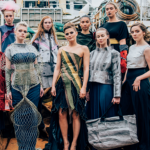
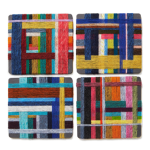
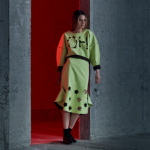
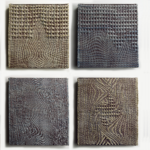
Digital design and other industrial innovations will have a profound impact on developers in the near future. In this industry as well as others, the competitiveness of designers and companies will be based on opportunities for innovation through the power of knowledge and skills. Designers and companies must be given the opportunity to utilize the tools and technologies necessary for further development, such as initialization and increased automation. Design and production needs to be connected more efficiently than today, with increased knowledge and skills in programming and enhanced digital literacy. Development must also take into account the increased demands of society on sustainability and tractability of materials. Concepts such as digital production technology and digital content technology are part of a new heavy-duty new generation of designers and companies.
These innovations need to be implemented, further into the design of designers and the other is the industry. The European Union is already pushing this trend into its plans as well.
Digital artisans can play a key role in this development. Current Fab Lab activities need to consider changing focus to take account of the above trend in the textile industry. Facilitating Digital Textile Workshop which can serve the local industry, especially designers and craftsmen. Such workplaces are found throughout the world, and have proved great bridges between experiments on materials, presentation of design and industry.
Fab Lab
Fab L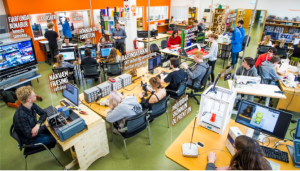 ab (fabrication laboratory) is open platform for the public, business, artists, entrepreneurs, and students with tools for prototyping (almost) anything. The tools make it possible to turn idea´s into objects with the help of computer-powered design and production technology. These include computer-controlled laser printers, vinyl cutter, CNC high precision milling machines, sewing machines, electronics, 3D scanners and 3D printers. Becoming a part of Fab Lab network means increased access to the community of teachers, professionals, research and entrepreneurs who share knowledge across the world.
ab (fabrication laboratory) is open platform for the public, business, artists, entrepreneurs, and students with tools for prototyping (almost) anything. The tools make it possible to turn idea´s into objects with the help of computer-powered design and production technology. These include computer-controlled laser printers, vinyl cutter, CNC high precision milling machines, sewing machines, electronics, 3D scanners and 3D printers. Becoming a part of Fab Lab network means increased access to the community of teachers, professionals, research and entrepreneurs who share knowledge across the world.
The number of Fab Labs in the world in 2018 is still growing, now near 1500. In Iceland there are 8 Fab Lab, located in Reykjavik, Ísafjörður, Sauðárkrókur, Akureyri, Fjardabyggð, Hornafjörður, Selfoss and Vestmannaeyjar. The workshops are in close collaboration via Fab Lab Iceland network, and in close cooperation with the Fab Foundation, whom host the Fab Academy. This network is good platform for outreach of technological innovation, education and knowledge sharing to all parts of the country. All Icelandic Fab Lab's are in close cooperation with primary and secondary schools in the areas.
How to make (almost) anything: Textiles
What began as a course from MIT Boston (´How To Make (almost) Anything´) has been adapted for Fab Labs, and is grown into a globally accessible distance learning program. The Fab Academy teaches the principles and applications of digital fabrication and rapid-prototyping. During the last 5 years the Fab Academy platform has started to expand, now collectively called Academany. Using the same teaching model, the first new course covered bio-technology (´How to grow (almost) Anything´), and it´s newest addition the ´Fabricademy´.
The ´Fabricademy´ offers content about textile design, exploring how to design using Fab Lab´s digital fabrication techniques and focuses on the development of new technologies applied in the textile industry. The ranges of the content stretches from the fashion industry to the upcoming wearable market.
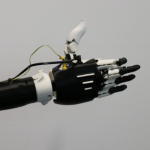
Spiral development
When science, art, design and technology get´s the space to experiment cross-disciplinary, it can lead to a new approach on to how create, by being playful with unconventional materials. But the first conceptual presentation does not have to be the answer to everything. Trough spiral development idea´s are fine tuned, often through different designers that are inspiring each other, creating new iterations from different perspectives. Examples of showcasing platforms are for example Design March, Dutch Design week and New York Fashion week.
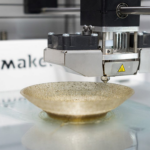
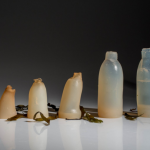
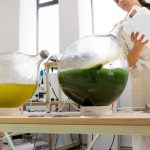
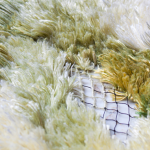
Distributed Design
The design and role of the designer is developing and adapting to the new digital world. We see that a new brand of designers is developing, designers wanting to change how products are manufactured and how customers relate to their products. We call this "Distributed Design". These new designers design, produce themselves and participate in the distribution of their products. They work with new technology and digital systems that allow them to share their works, design them and collaborate across the world. More and more products are now designed, created and shared through international systems. And they are manufactured locally with local fabrics, small quantities and customized to the needs of the customer. Distributed design is paving the way for a new brand of entrepreneurial designers who greatly influence the design and how it comes to the customer.
Part of the ideology of distributed design is that you can design anything, and make it anywhere.
TCBL
Textile & Clothing Business Labs is a EU Horizon 2020 project about exploring new ways to design, make, and work together. New production and distribution technologies, innovative organisational models and creative energies are opening up opportunities to bring production capacity back to Europe. TCBL has built a valued-based community of 136 enterprises, 28 business labs, 75 expert advisors, 12 service providers, and 7 startups collaborating towards this shared goal. Innovative business models are currently being explored for re-structuring supply chains (natural cotton and eco-friendly production), re-shaping production processes (short runs and independents) and re-framing customer values (bacteria dyeing and digital heritage).
This list contains examples related to impact and development of the textile sector of Iceland.
Listaháskóli Íslands
The Iceland Academy of the Arts is a school of all arts and crafts and offers a undergraduate degree in fashion design. The school is a self-employed institution and has an operating agreement with the Ministry of Education.
Textílsetur Íslands
The Icelandic Textile Center, located at Blönduós aims to promote or develop Icelandic and international textiles and to encourage research as well as education in the field of textile art and design. The center provides a facility for visiting students, scholars, and artists with working spaces to conduct their artistic practice, research, and study-trips within textiles.
Hönnunarmiðstöð Íslands
The Icelandic Design Center is a presentation and information center for Icelandic design in Iceland and abroad. The main task of Design Center is to strengthen the nation's understanding of the importance of design for society and the Icelandic economy, and point out the great value creation that may be in Icelandic design for society all. They also contribute to the progress of Icelandic designers abroad, which is a great opportunity for Icelandic design products.
Textílfélagið
The Icelandic textile guild was founded in 1974 by students, teachers and textile artists. They organise a large-scale exhibitions every five years and also have groups networking via smaller exhibitions. Members have a variety of skill in their artwork, such as woven, knitted, hooked, stitched, printed and other textile design forms.
Heimilisiðnaðarfélagið
The Home Industry Association of Iceland was founded on July 12, 1913. The company's role is to promote and protect the national Icelandic household industry and maintain the knowledge and interest of the people in producing beautiful and useful things that fit new demands and derived from national cultural heritage. The company is working on its goals trough educational meetings, exhibitions and newsletters, journals and manuals for education.
Félag textílkennara
http://ki.is/textil/um-textil/log-textil
The textile teacher's association has the purpose of applying for a strong position in the textile industry, and ensuring that the main curriculum of compulsory schools is enforced at all levels of elementary school. In addition, to strengthen the collaboration of textile teachers, both internally and with other teachers.
Framhaldsskólar
Higher education schools such as Fjölbrautaskólinn í Breiðholti, Fjölbrautaskóli Suðurnesja, Fjölbrautaskóli Garðabæjar and Fjölbrautaskóli Suðurlands provide textile education. Also Myndlistaskólinn í Reykjavík also offers textile training.
Nýsköpunarmiðstöð Íslands
The Icelandic Innovation Center encourages innovation and promotes the advancement of new ideas in Icelandic economy by providing active participation and support to entrepreneurs and businesses. A group of specialists in different fields encourage innovation and support the advance of new ideas through research, development projects, business development and professional advice and consulting.
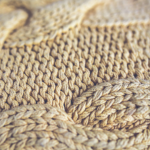 Natural fabric
Natural fabric
Are made from plants (cotton, hemp, bamboo etc), animals (wool, silk etc.) and geological processes (basalt) and have biologic degradable properties. They can also be applied as part of a composite material, where the orientation of fibers impacts the properties.
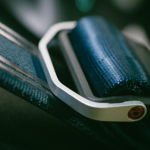 Artificial fabric
Artificial fabric
Are textiles made from man-made fibers rather than natural fibers. Synthetics are petroleum based, chemically produced fabrics are made by joining monomers into polymers, through a process called polymerization. (nylon, polyester, acrylic, fleece, lycra, spandex and polyolefin etc.)
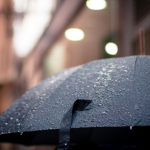 Technical fabric
Technical fabric
A technical textile is a textile manufactured product. Its function is the primary criteria. Nanotechnology is embedded in regular fabric to create special features, but retain the properties of the original textile.
(conductivity, water repellent, anti-bacterial etc.)
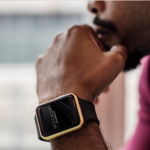 Wearable
Wearable
Wearable is considered a functional object which has an aesthetically pleasing look. An example of a device can be a hearing aid (medical) or a Bluetooth phone earbud (functional). But aesthetically pleasing devices by today's standards are for example the biometric wristband, heart rate trackers or smart watches.
Technically, a wearable is defined in 2 categories. A soft and a hard wearable. The soft applies to flexible objects, for example a T-shirt with integrated flexible sensors. Hard is the opposite and is usually with some kind of in-flexible surface, like the face of a watch.
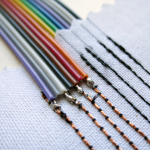 E-textile (smart textile)
E-textile (smart textile)
The term ‘electronic textile’ (E-textile) is applied when a fabric has digital components, such as a small circuitry woven, embedded or sewn into it. Sometimes the term ‘smart garments’ or ‘smart fabrics’ is used instead.
Date of publishing: 29 november 2018
Published by: Nýsköpunarmiðstöð Íslands
ISBN: 978-9935-463-55-5
Main content written by: Linda Wanders
Editors: Arna Lára Jónsdóttir, Frosti Gíslason, Linda Wanders, Karítas Sigurbjörg Björnsdóttir og Karl Friðriksson
Print design: Hjörleifur Jónsson
Reading: Jökull Sævarsson, Helga Halldórsdóttir
Special thanks to: Anastasia Pistofidou, Elsa Arnardóttir, Katrín María Káradóttir, Lind Völundardóttir, Skúlína Hlíf Kjartansdóttir, Soffía Margrét Magnúsdóttir, Troy Nachtigall.
Education
Academany - Fabricademy https://textile-academy.org/
Fab Academy - FabLab http://fabacademy.org/
The Swedish School of Textiles http://stdl.se/?cat=8
TextielLab Tilburg, the Netherlands https://www.textielmuseum.nl/en/page/textiellab
Icelandic school of Arts https://www.lhi.is/en/fashion-design1
Networks
TCBL - Textile & Clothing Business Labs https://tcbl.eu/
NFA - Nordic Fashion Association http://nordicfashionassociation.com/about/
NTA - Nordic Textile Art http://www.nordictextileart.net/about-us/
Association of Icelandic artist https://sim.is/en1/
Iceland Design Center http://www.icelanddesign.is/
Reykjavik fashion festival https://www.serious.business/case/RFF/
E-textile projects
Fab Textiles - Barcelona - Open sourcing fashion http://fabtextiles.org
Kobakant - DIY wearable tutorials and documentation http://www.kobakant.at/DIY/
Fablab Berlin - healthcare https://www.careables.org/
Design innovation
Video Talk - Wearables - Pauline van Dongen https://www.youtube.com/watch?v=9uuhxGhD9bo
Led dress haute couture http://cutecircuit.com/
3D knitting https://www.digitaltrends.com/cool-tech/carnegie-mellon-knitted-machine/
Kinematics http://www.contemporist.com/3d-printed-dress-inspired-by-petals-feathers-and-scales/
Skin electronics https://singularityhub.com/2016/06/30/the-next-wearable-technology-could-be-your-skin/#sm.000009m6iuiww7d56sopvyjm4br7c
Clothing for elderly https://www.digitaltrends.com/cool-tech/superflex-powered-clothing/
Papers
3d knitting https://drive.google.com/file/d/1UO0aGgbZqidvzgupqrJ--GwazSmIkph2/view
E-textile market https://roswellgazette.com/2018/09/26/global-e-textile-market-2018-2025-2/
Circular economy https://www.ellenmacarthurfoundation.org/assets/downloads/publications/A-New-Textiles-Economy_Full-Report.pdf
sustainable fibres from basalt http://basalt.today/2018/09/17035/
Future craftsmanship http://nerding.at/download/ISEA_satomi_perner-wilson.pdf
Case Study of Renewable Bacteria Cellulose Fiber https://link.springer.com/chapter/10.1007%2F978-981-10-0522-0_6
Sustainability
Dry dye https://www.innovationintextiles.com/nike-adopts-waterless-dyeing-technology/
Textile recycling https://www.thebalancesmb.com/the-basics-of-recycling-clothing-and-other-textiles-2877780
Video Talk - Fast fashion - wardrobe to die for https://www.youtube.com/watch?v=YglyHzvBqpA
Video Talk - Circular economy https://www.youtube.com/watch?v=m__wb2XitvQ
Video Talk - Fashion and tech to Sustainability https://www.youtube.com/watch?v=FbsGRknLYg4
Video Talk - Why to care - the fashion effect https://www.youtube.com/watch?v=mPM9lhackHw
Video Talk - Engage with Ethical Fashion https://www.youtube.com/watch?v=WXOd4qh3JKk
3D shapes
Video clip - Liquid printing demo https://vimeo.com/245973170
Self forming structures https://n-e-r-v-o-u-s.com/blog/?p=8011
Active Shoes https://selfassemblylab.mit.edu/active-shoes/
3D knitting https://textiles-lab.github.io/publications/2018-autoknit/
Movement
Video Talk - Drexel university projects https://www.youtube.com/watch?v=LDCiCX78lFU
Video clip - Inflatables demo https://vimeo.com/267446388
Active textiles https://selfassemblylab.mit.edu/active-textile/
Programmable Materials https://selfassemblylab.mit.edu/programmable-materials/
Soft robotics
Liquid printed pneumatics https://selfassemblylab.mit.edu/liquid-printed-pneumatics/
Fabric-based sensors https://wyss.harvard.edu/soft-and-stretchy-fabric-based-sensors-for-wearable-robots/
Space engineering https://www.media.mit.edu/projects/spatial-flux/overview/
Material
Material researcher https://web.media.mit.edu/~neri/site/projects/projects.html
Elastic display https://techxplore.com/news/2018-02-japanese-ultrathin-highly-elastic-skin.html
Fiber alternatives https://fashionunited.com/news/business/6-sustainable-textile-innovations-that-will-change-the-fashion-industry/2017100917734
Spider silk parka https://www.wired.com/2015/12/the-north-faces-moon-parka-is-spun-from-faux-spider-silk/
Biology
Textile-based bacteria-powered battery https://techxplore.com/news/2017-12-scientists-stretchable-battery-fabric.html
Video clip - Microbiological Textile https://www.youtube.com/watch?v=o8AlbE_43o8
Algae design https://www.dezeen.com/tag/algae/
Bioplastic https://www.lhi.is/en/news/ari-jonsson-product-design-student-awarded
Bacteria dye https://www.fastcompany.com/90257662/these-gorgeous-colors-come-from-dye-made-by-bacteria-not-chemicals
Fungi sneaker https://nat-2.eu/nat-2-fungi-line/
Silkworm pavilion https://www.dezeen.com/tag/neri-oxman/
Kombucha https://www.thekitchn.com/you-can-make-clothes-out-of-your-kombucha-scoby-214887
Kombucha designer https://www.mindbodygreen.com/articles/the-business-of-kombucha-clothing
Connected clothing
RFID benefits https://www.rfidjournal.com/articles/view?7252
Applied RFID https://www.launchmetrics.com/resources/blog/rfid-technology-5-ways-fashion-brands-are-using-it
Internet of things http://fortune.com/2016/04/18/evrythng-avery-dennison/
Products
Prosthetic https://www.ossur.com/corporate/products/innovation
Music switching jacket https://www.wired.com/story/i-wore-the-jean-jacket-of-the-future/
Bra technology https://houseofanesi.com/
Sensors in clothing https://www.machina.cc/
Desktop knitting https://blogs.lt.vt.edu/andrewwalraven/2017/04/04/kniterate-bringing-digital-fabrication-to-textiles/
Trend watching
Connected clothing https://www.wareable.com/fashion/avery-dennison-connected-clothing-10-billion-6678
Wearables and Nylon https://www.textileworld.com/textile-world/fiber-world/2016/03/wearables-and-nylon-the-future-of-e-textiles-is-about-more-than-technology/
Smart clothing https://www.wareable.com/smart-clothing/best-smart-clothing
Art & Design
Digital weaving art https://www.digitalweaving.no/janice-lessman-moss-weavings-from-iceland/
Design March fashion 2016 http://www.nordicstylemag.com/2016/03/designmarch-2016-fashion-showroom/
Blue fashion challenge https://nora.fo/blue-fashion-challenge
Colour map of Icelandic wool https://nordichouse.is/en/event/litakort-af-islenskri-ull/
